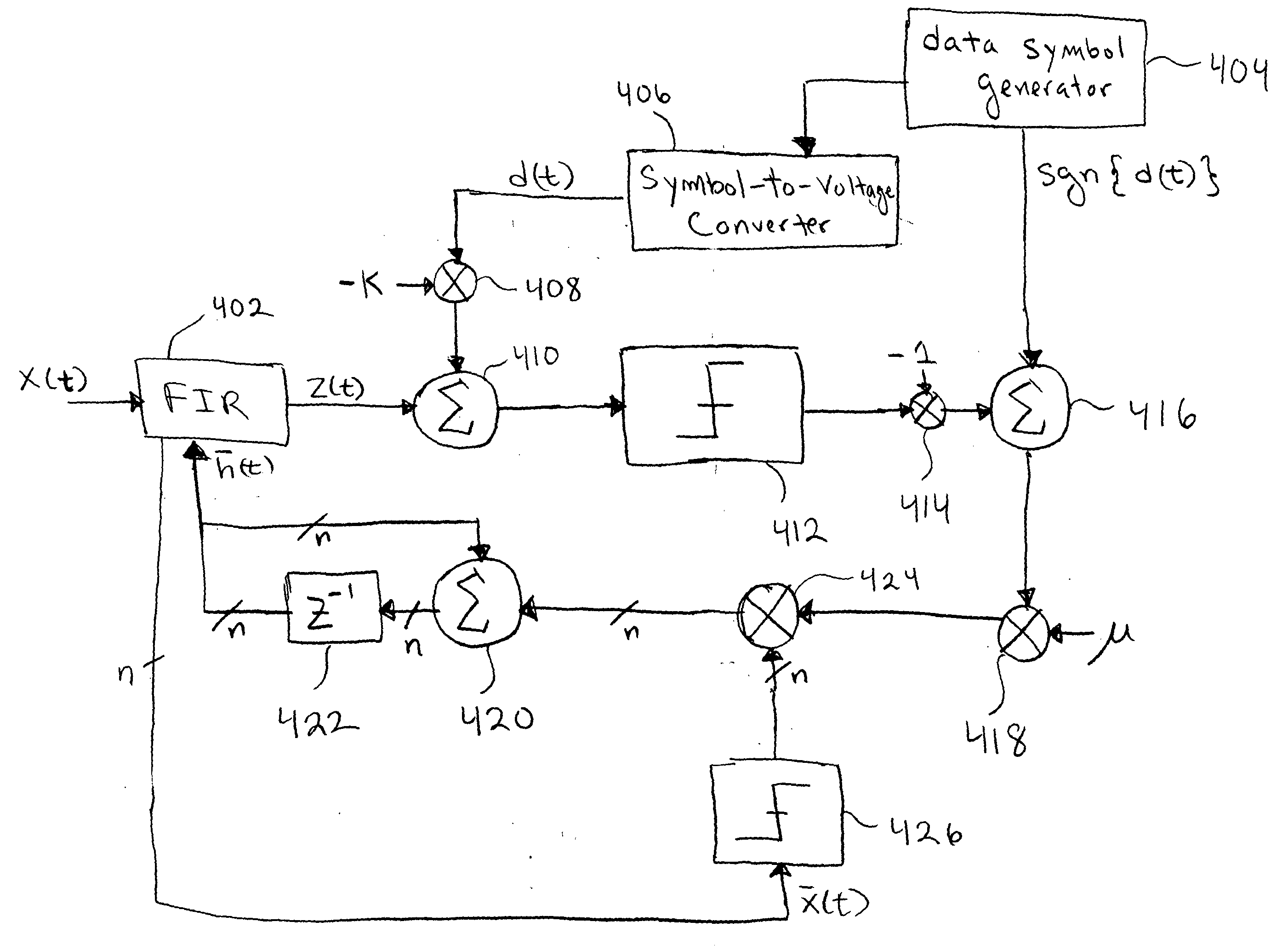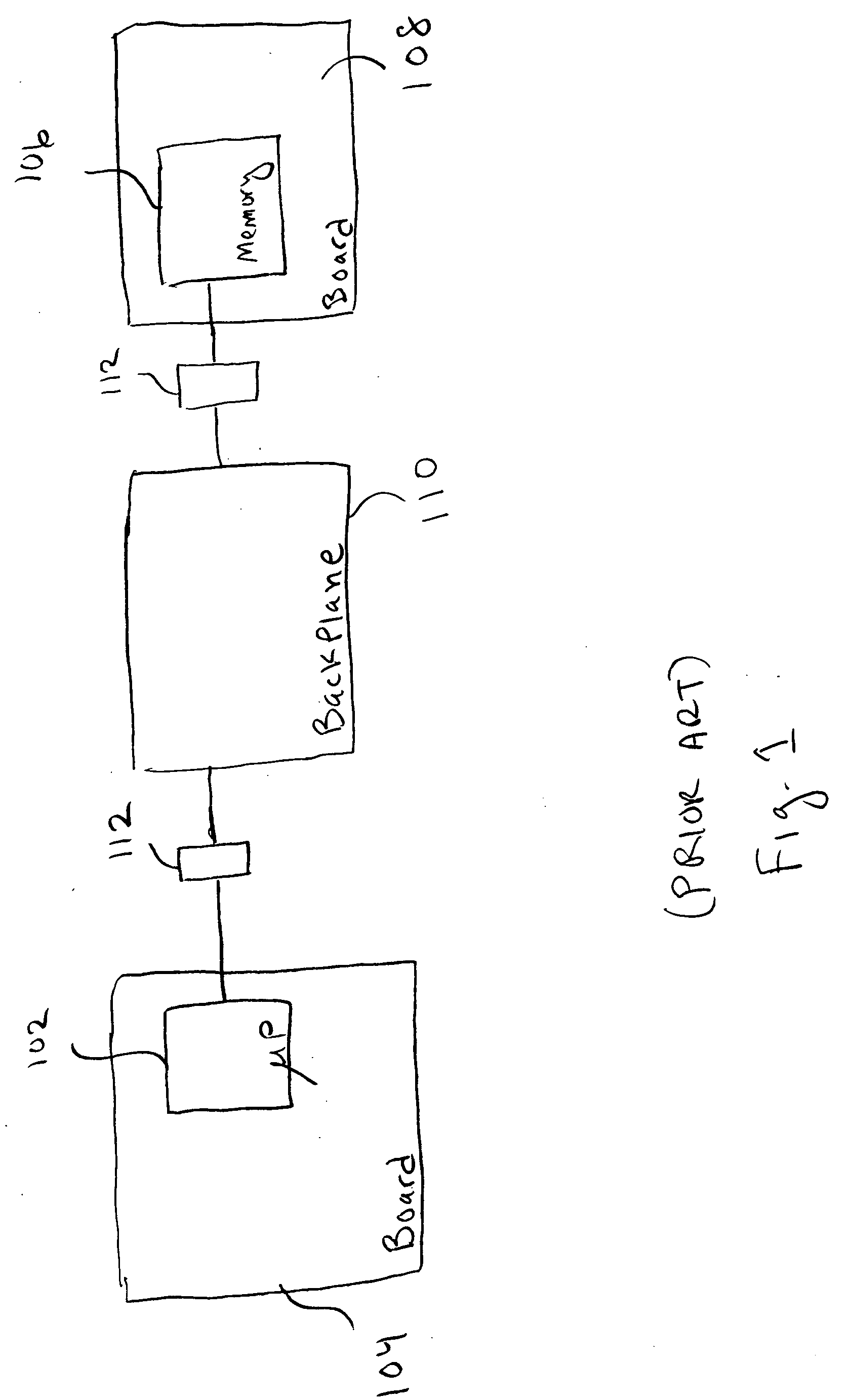Calibration of scale factor in adaptive equalizers
a technology of adaptive equalizer and scale factor, applied in the field of communication circuits, can solve problems such as undesirable properties, intersymbol interference may present a problem, and intersymbol interference is presen
- Summary
- Abstract
- Description
- Claims
- Application Information
AI Technical Summary
Problems solved by technology
Method used
Image
Examples
Embodiment Construction
FIG. 4 provides an abstraction of an embodiment of the present invention. The embodiment of FIG. 4 performs the following adaptive update:
{overscore (h)}(t+1)={overscore (h)}(t)+μ[sgn{d(t)}−sgn{z(t)−Kd(t)}]sgn{{overscore (x)}(t)}, (1)
which may be termed the conditional update sign-sign LMS algorithm. Equalizer 402 is a FIR filter with filter weights [{overscore (h)}(t)]i, i=0, 1, . . . , n−1, and provides the filtered output z(t)=∑i=0n-1 [h_(t)]ix(t-i)
Each filter weight is represented by a set of discrete voltages taking on either 0 or VCC (LOW or HIGH), so that each filter weight may be viewed as a discrete variable in the digital domain represented by a finite number of bits. However, the filtering is performed in the analog domain so that the filtered output z(t) is an analog voltage signal. If differential signaling is employed, then both analog voltages x(t) and z(t) are differential signals. An example of FIR 402 at the circuit level will be described later. Not sho...
PUM
 Login to View More
Login to View More Abstract
Description
Claims
Application Information
 Login to View More
Login to View More - R&D
- Intellectual Property
- Life Sciences
- Materials
- Tech Scout
- Unparalleled Data Quality
- Higher Quality Content
- 60% Fewer Hallucinations
Browse by: Latest US Patents, China's latest patents, Technical Efficacy Thesaurus, Application Domain, Technology Topic, Popular Technical Reports.
© 2025 PatSnap. All rights reserved.Legal|Privacy policy|Modern Slavery Act Transparency Statement|Sitemap|About US| Contact US: help@patsnap.com



